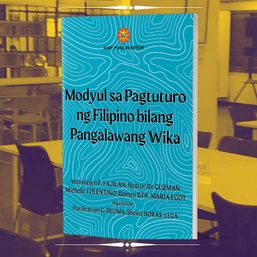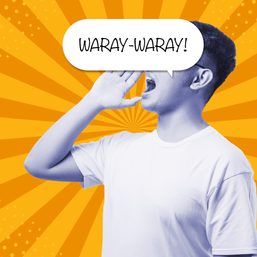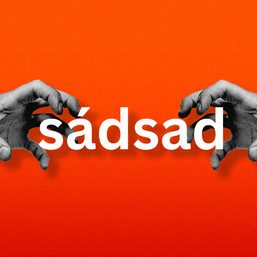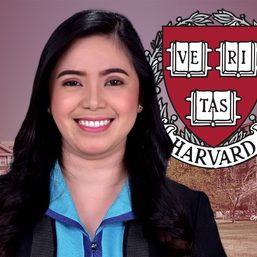SUMMARY
This is AI generated summarization, which may have errors. For context, always refer to the full article.
![[ANALYSIS] Code switching or translanguaging — which is better for classrooms?](https://www.rappler.com/tachyon/2021/01/code-switching-v-translanguaging-January-2-2021.jpg)
When I first introduced to my colleagues the approach I use in my mother tongue classes, all of them asked me what the difference was between translanguaging and code switching. I kept telling them that in translanguaging, I use all the knowledge my learners have in Ilokano, in English, and in Tagalog to make them understand my lessons.
“But you are using Ilokano?” they asked.
“Yes.”
“And English?”
“Yes.”
“And Tagalog, too?” they asked with conviction.
“Yes.”
“So that is code switching,” they told me.
In code switching, languages — and the abstraction that languages carry — can be objectified into autonomous, structured, and self-contained entities. For example, a bilingual or multilingual Filipino speaker speaks in 3 languages: in Ilokano, in English, and in Tagalog.
Accordingly, the notion of code switching supports the idea that a bilingual or multilingual speaker is just switching or shifting from one language to another — switch to Ilokano, switch to English, and switch to Tagalog — because the brain is divided into separate languages.
The problem with this paradigm is that it takes an outsider’s perspective to note this separation and map how this separation is manifested in the speech of a bilingual or multilingual speaker.
This paradigm begs the questions: (1) what is the nature of language?; (2) do languages exist in isolation and are they unaffected by other languages?; and (3) who must decide what counts as a language and what counts as a legitimate use of a language?
Contrary to what code switching suggests, named languages are not mental and psychological entities. Named languages are sociopolitical constructs because — the answer to the first question — named languages are the end result of long economic, social, and political histories.
The answer to the second question is that languages do not exist in isolation and are always in contact with other languages. Very good examples are in the national language project. According to article XIV, section 6 of the 1987 Constitution: “…dapat itong payabungin at payamanin pa salig sa umiiral na mga wika ng Pilipinas at sa iba pang wikang ginagamit sa bansa.” These include the Cordilleran languages that mix with Ilokano, the Spanish creole Chavacano, and the Philippine English.
The problem with the paradigm of code switching is that it is born from abstract concepts — from the idea that languages are autonomous, structured, and self-contained entities; to the ideological premise that a bilingual or multilingual speaker switches or shifts from one language to another, then maps this to what is happening in the physical world through speech.
To any person knowledgeable enough to define a word by recognizing the affixes attached to a root word, they will immediately say that the previous description of code switching is basically translanguaging, because of the prefix trans-, meaning across, over, and beyond, plus the root word language, which is commonly understood as autonomous named language.
But translanguaging does not follow this logic. The use of -ing embodies the notion that language must not be considered as a named entity independent of people and society. Instead, translanguaging puts forward that language is a practice dependent on people and society, and therefore is a verb. This leads us to defining translanguaging as a practice not only of bilingual and multilingual speakers, but of all people and of all societies.
Likewise, instead of starting from a common and very abstract idea of the existence of named languages, translanguaging starts from viewing the reality that the speech of a bilingual or multilingual speaker is a product of how this speaker works out a set of linguistic features, also known as their linguistic repertoire or idiolect. This linguistic repertoire refers to all the vocabularies, grammar features, and even pronunciations and accents that a speaker has already acquired from their various encounters as a social being.
While this still looks like switching and shifting between codes or vocabularies of two or more named languages, this is only from an outsider’s perspective, from the idea that speech does not exist naturally but exists only after the fact that there are autonomous, structured, self-containing, and barricaded named languages.
From the speaker’s perspective, however, these linguistic features are not separated and divided. In simple words, a bilingual or multilingual speaker uses all of their linguistic knowledge; they do not separate these into autonomous, structured, and separate named languages, but regard all of these together as handy tools to make meaning and sense. Noting this in pedagogy, this is a productive phenomenon to take advantage of in learning.
Translanguaging as a pedagogy considers languages as resources of learning, and bilingualism or multilingualism as an opportunity to maximize learning. Translanguaging likewise posits that instead of policing learner’s speech to be taal Tagalog, puro nga Ilokano, or fluent English, teachers must encourage learners to just speak regardless of which named languages the linguistic features they use fall under.
Through this, teachers can encourage learners to speak their mind and participate freely in classroom interactions without any fear of being policed or reprimanded due to their use of language. At the same time, teachers can have a better idea of when and how they can help their learners towards the desired learning outcome, because communication is not hampered.
Translanguaging, with its just practices and democratic atmosphere, is what must be practiced in mother tongue classrooms. – Rappler.com
Leonardo D. Tejano is a teacher in Mariano Marcos State University.
Add a comment
How does this make you feel?





There are no comments yet. Add your comment to start the conversation.